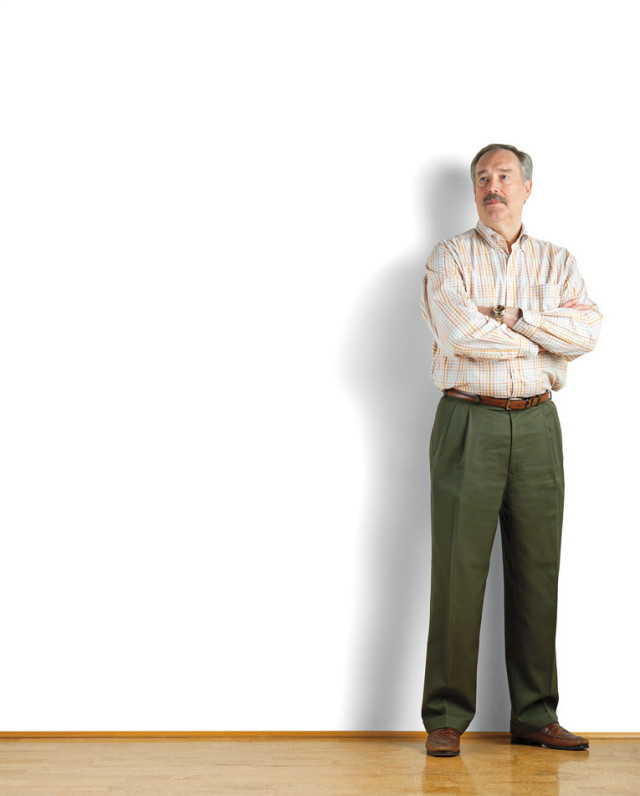Man of the Cloth

SWAN ISLAND is a mysterious land. The name is more romantic than the reality: one long, low warehouse after another, where semis nestle up to loading docks like nursing dachshunds. The North Portland industrial sanctuary’s gritty, pre–creative class vista makes it somewhat surprising to find Stan Gray, president of E.E. Schenck, stealthily supplying the homespun worlds of quilting and sewing here.
If you’ve ever sewn a bag with a bird on it—or paid too much for one on Etsy—chances are the material came through E.E. Schenck’s Swan Island warehouse, a multicolored riot of fabrics, buttons, zippers, and anything else a sewing shop might sell. Founded in 1921 as a silk importer, Schenck is now the largest fabric wholesaler in the US, shipping 7.5 million yards annually. (The company also supplies small manufacturing: dog beds, film backdrops, ham radio whip antennas.)
Gray, a 62-year-old Portland native, started as a part-time Schenck employee in 1968. He reluctantly ended up running the show in 1975, when the then-owner fell ill. “I was left in a sink-or-swim situation,” Gray says. He swam. Under Gray, the business has grown from a 10-person operation to a $30 million company with more than 100 employees.
In his decades at the helm, Gray has steered the company through profound change in the US textile business. As clothing production moved offshore, the domestic wholesale industry found a new niche: supplying empty-nested baby boomer hobbyists and, later, their craft-obsessed offspring. Gray himself doesn’t quilt (“Could I sew a straight seam? Maybe.”), but his role in the company is nonetheless a creative one, as he devises ways to sell stuff to the thriving quilting and sewing subcultures: prepackaged quilt kits, scissor caddies, “Wild and Crazy Quilter On Board” license plate frames. This month at its warehouse, the company hosts Trends, a three-day regional trade show. More than 500 quilt-shop buyers from all over the West Coast and dozens of other vendors will turn Swan Island into a sort of Babel of buttons.
“There’s always going to be fabric,” Gray says. “Where it’s made, what it’s made of, those things will change.” As long as Schenck keeps its place in the sewing circle, there will be a corner of Swan Island that’s steely outside and glittery and fleecy when you roll up the door.



